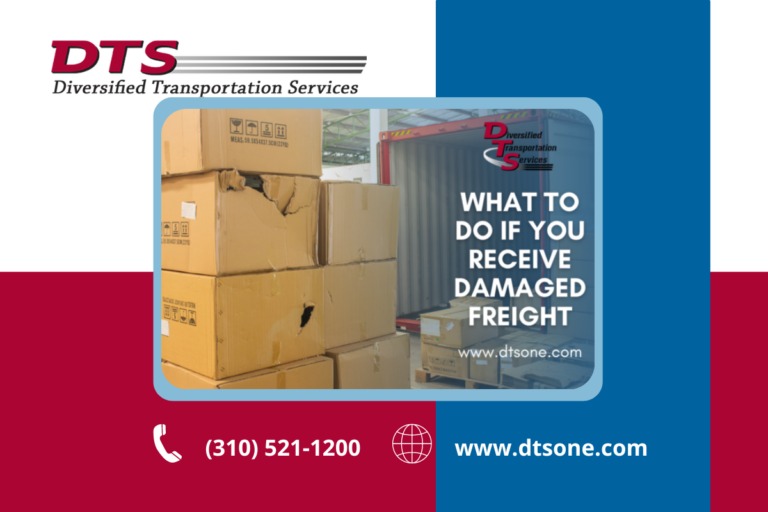
When working in the shipping and receiving world, one unavoidable issue is when you receive damaged freight.
While receiving damaged freight is frustrating and time-consuming, there are some important steps that you can take to mitigate your damages and prepare your case when filing a claim.
Before we begin, it is important to understand the different types of freight damage:
Whenever you receive freight, the first thing you should do is count and inspect all of the pieces contained in the shipment; whether or not there is apparent damage.
The inspection must be conducted carefully BEFORE signing the delivery receipt.
If a delivery receipt is signed by the consignee with no indication of loss or damage it will severely limit your chances of full recovery from the carrier.
After you have counted and inspected all pieces of the shipment, you must notate your findings on the delivery receipt. If you discover that the shipment is DAMAGED and/or SHORT merchandise, it is important to specify the condition which you received the product before the truck driver signs their name at the time of delivery.
It is important to be specific and factual when listing the issues on the delivery receipt: i.e. “corners bent, wrapping torn, tarp torn and shredded, two sheets missing”, etc.
When examining your shipment, even damage that is ever so slight should be notated on the delivery receipt.
If the banding, shrink, or stretch wrapping is broken upon receipt, inspect and count the contents in the driver’s presence. Additionally, if you find that any of the products are missing, write a clear exception notation on the delivery receipt such as: “SHORT Two (2) ctns. Paint #1234.”
Shortage and damage notations on the delivery receipt provide the evidence required to establish a “prima facie” claim that the carrier did not deliver the product in the condition that it was picked up in, and therefore, is liable for loss or damage.
If you receive damaged freight, take photographs of the damaged merchandise and the trailer if the load has badly shifted or is damaged. If possible, get the driver in the picture along with the trailer number, rail car number, or license plate.
It is also recommended that video cameras be installed at all receiving and shipping locations as well as at guard gates and that films be stored for future review.
When a shortage or damage is discovered, CALL THE CARRIER IMMEDIATELY to give them an opportunity to schedule an inspection (whether, or not, an exception was noted on the delivery receipt) and confirm in writing the date and time and the names of the persons who were notified. Also, report all damage and shortages to the shipper in writing, particularly if they are repetitive.
An immediate call to the carrier with email confirmation provides the beginning of hard documentary evidence for the eventual claim file. It also establishes the timeline for the carrier to perform its inspection.
If the carrier fails to make the inspection within the time limit, which is generally 30 days from notice, the consignee should perform the inspection and submit a copy of its findings with its claim.
One of the most important steps to take in cases of ALL DAMAGE claims is to set aside the damaged goods and packaging awaiting the carrier’s inspection.
Failure to comply with saving all of the original packaging and damaged goods deprives the carrier of the opportunity to inspect the goods and the packaging, which will in turn, severely hinder your chances of recovering damages (unless, of course, you have preserved the evidence by taking photographs, obtained an affidavit from the person having actual knowledge of its condition, etc.).
It may seem unfair but paying the freight charges without delay for a damaged shipment is essential. If you refuse to pay the freight charges; it could delay the resolution of your claim.
You typically have 9 months from the delivery date, or expected delivery date, to file a claim. If your delivery receipt is not noted as damaged or short, you only have 5 days to report to the carrier that you have discovered a problem with the shipment.
Ensure that you have the following documents to prepare your claim case:
At Diversified Transportation Services, we provide concierge transportation services for our customers and will assist you in filing a claim with the carrier. We are also able to offer cost-effective supplemental cargo insurance coverage upon request so that you can rest assured that your product will be amply insured in transit.
Whether you're a company looking to improve one facet of your supply chain, your entire supply chain, or simply looking for a transportation and logistics consultation, we can help.